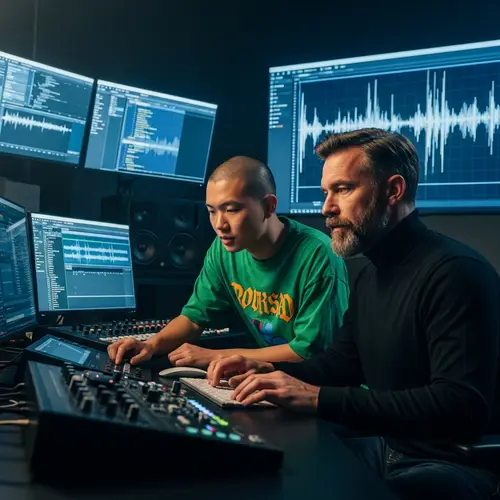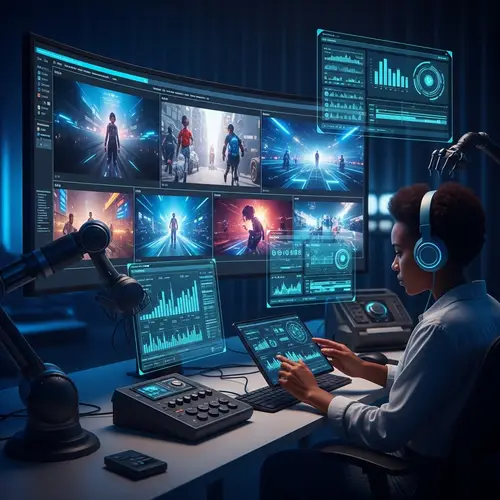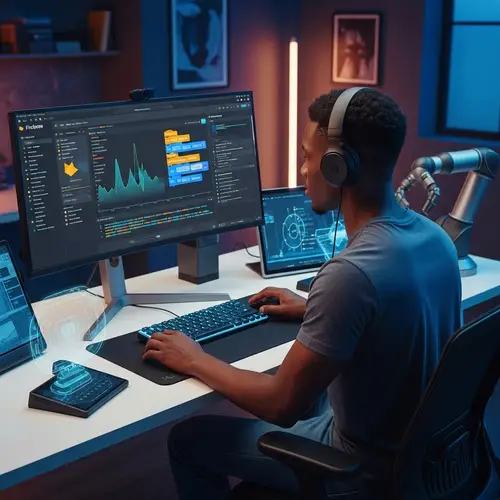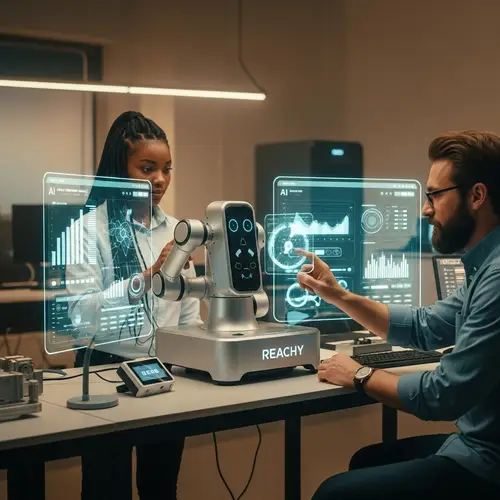Music just got a tech-powered twist, to say the least. Google has rolled out something musicians and coders alike might find seriously intriguing — Magenta RealTime. Picture an AI that can jam with you during a live session and actually keep up. Sounds wild, right? Well, it’s here now, and it’s open-source too.
The way I see it, this tool doesn’t just play notes; it listens, reacts, and performs alongside you. If you’ve ever dreamed of having an improv partner that never sleeps, never complains, and always hits the right keys, Google might’ve just built the perfect one.
Presentation to Magenta RealTime AI

Magenta RealTime is Google’s fresh drop into the AI music scene, created under its Magenta project. It’s modeled to improvise music in sync with a human performer — yep, live. No pre-recordings, no waiting around. It listens and reacts in milliseconds.
Think of it like having a virtual jazz buddy. Or maybe an AI DJ that can feel your vibe in real time (there’s that phrase again — but trust me, there’s no better way to say it). It builds upon Google’s older music tools by adding that special sauce: responsiveness and timing, which totally flips the experience.
What is Magenta RealTime Based On?

Under the hood, it’s got TensorFlow mechanics, jazzed up with advanced calculations using Google’s AI frameworks. At its heart is a neural network trained with a massive selection of piano performances and instrumentation. The result? Fast-reacting, generative music that doesn’t sound robotic.
An illustration of such an AI instrument is this: you’re noodling at your keyboard (musical, not the typing kind), and this AI fills in behind you, syncing harmonies and rhythms as if it’s been practicing with you for weeks. Honestly, I feel like that’s the kind of thing every musician dreams about.
What Precisely Sets Magenta Apart from the Swarm?

It might sound odd, but what really sets Magenta RealTime apart from the swarm of AI music tools is how it meshes with human performers. It’s not some preloaded playlist or a music-mashup engine. It’s about response. Reaction. Flow.
Also, it’s open-source. That’s huge. You can tweak it, break it, rebuild it — basically use it like clay if you’re tech-savvy enough. This gives artists and coders hands-on control, blending creativity with experimentation. No two sessions will ever sound the same.
Calling All Musicians and Developers: Why You Should Care

This isn’t just for pro musicians or tech geeks. Whether you compose, play, or just mess around in FL Studio, Magenta RealTime offers something worth toying with. It opens up space for live experimentation—something that used to be way harder with AI tools in the past.
If you ask me, mixing machine learning with live music feels like combining peanut butter and bacon. Unexpected, but kinda tasty? You won’t know till you try.
Here’s how it breaks down:
- Timing precision: The AI reacts swiftly to live inputs.
- Generative variety: It doesn’t spit the same patterns — you get fresh sequences every time.
- Open access: The code’s open, so you can build on top of it.
How to Use Magenta RealTime: Kickoff for Users

Now the fun part — getting started. The developers behind it dropped a neat walkthrough on how to get this running using Google Colab. Yep, no installation chaos on your machine. Just a browser and basic technical curiosity.
Magenta RealTime Colab Demo Setup
Go to the Magenta RealTime Colab notebook (Google released this via GitHub), and you’ll find step-by-step instructions, sample inputs, and even a starter MIDI pack to lollygag with. You can either use the default instruments or route the output to your favorite DAW through MIDI Bridge.
Honestly, if you’re already comfy with Python or music production tools, you’ll cruise through. For newbies — maybe a short weekend project? There’s a learning curve, but it’s chill.
Your Gear Checklist:
- Laptop with up-to-date Chrome/Firefox.
- Browser-based DAW or local setup (Ableton is a winner here).
- Patience + headphones (trust me).
Download Options: Where to Grab It

If you’re wondering, “Where’s the Magenta RealTime AI music model download?”, the code and demo instructions live on Google’s GitHub repo. You can fork the project and make changes to match your style or experiment with it for fun.
For what it’s worth, you don’t need a monster computer. Most of the heavy lifting happens in the cloud via Google Colab. Although, if you’re running things locally, expect a bit of fan noise.
Also, keep an eye on updates. The dev crew is pretty active. By the time you finish reading this, they might’ve already added another jazz mode or orchestral twist.
Real-World Uses: Kinda Makes You Think

So who’s this actually for?
Live instrumentalists for sure — keyboards, guitars, even wind instruments that use MIDI converters. DJs wanting a responsive backing may find it wildly creative. Even music teachers trying to demo harmony concepts to students could benefit from this.
Maybe it’s just me, but I could see this being used in therapy, sound design, or relaxation music too. Any spot where spontaneity and musical flow matter, really.
Not-So-Obvious Wins:
- Film scoring experiments — imagine testing soundtracks on the fly.
- Live-streaming musicians — gives solo acts a virtual band.
- Jam sessions with no drummer? This might just work.
Why This Matters in 2024
In the world of AI and music, everything’s moving fast. Artists are already remixing what AI creates. But creating with AI as a partner, in real time, is a new ballgame. It’s responsive. It’s adaptive. And not gonna lie — kinda exciting.
So if you’re exploring new sounds and tools, Magenta RealTime offers something that’s more than just another AI novelty. It’s functional, creative, and surprisingly musical.
Frequently Asked Questions
It’s an AI-backed instrument from Google that generates and reacts to live music using advanced neural networks. You play — it responds.
The code and setup instructions are hosted on GitHub. You’ll need Colab or a Python-friendly editor to run it.
Head to the official Colab notebook, follow the instructions, supply your MIDI input, and start exploring improvisation alongside the AI.
Yes. It’s useful for live performances, studio sessions, film scoring, or even music-inspired software development.
Absolutely. The tool is fully open-source, giving developers tons of room to customize or contribute back to the project.
Final Note: Should You Try It?

If you’re even a little curious about AI collaboration in music, Magenta RealTime’s got more than enough going on to make it worth your time. It’s flexible, fun under the hood, and plays nice with most DAWs and setups.
So, what’s next for your sound journey? Maybe this is the jam partner you’ve been half-jokingly wishing for all these years. Only one way to find out — go mess around with it. Try the Magenta RealTime colab demo and see what kinds of creative sparks fly.
Ready to bring AI into your improv flow? Explore more ideas to ask your digital partner in sound creation. You might walk away with something song-worthy — or, honestly, just a good laugh. And hey, that’s worth it too.




